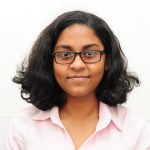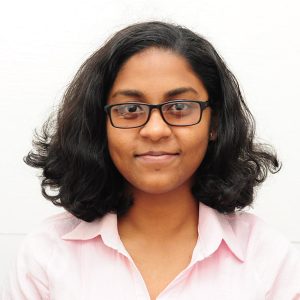JUST after being sworn in, President Irfaan Ali highlighted that a priority for him will be to help usher in a process of national healing. National healing, with a particular emphasis on racial reconciliation, is a noble agenda and I place much hope in seeing how this will be approached and subsequently, achieved.
I gather that his sentiments originated from his cognisance of the divisive politics — laced with racial and ethnic tensions — which characterised this protracted elections season. This isn’t something new, or something that emerged as a result of the 2020 elections; rather, it was exacerbated during this time.
The need for this healing, however, manifested itself prominently following the painting of the Black Lives Matter mural at the Square of the Revolution, ahead of this year’s Emancipation Day observances.
A friend of mine made a post of asking if all the other groups would take to the streets and paint their murals. He ended that post with #OneNation. I engaged with him for a bit, because I believe that I must at least try to help someone learn before calling them out and cutting them off (that’s just me, though). My friend said that many non-African Guyanese feel ‘left out’ because of the mural; he opined that all races face all of the same problems and that all lives matter. I spoke about how Black Lives have been affected disproportionately and how “Black Lives Matter” doesn’t equate to “Black Lives Matter MORE” or “ONLY Black Lives Matter.” He maintained that the move seemed divisive, particularly during this tense election period, and argued that something more inclusive should have been done.
Others jumped onto our thread of comments and argued that Black Lives, specifically, aren’t affected/ targeted in Guyana las they are in the US; some highlighted the hardships faced by the Indigenous peoples. I was immensely grateful when two of my other friends joined and tried to help the commenters understand that the mural is not divisive, but a simple but profound act of people speaking out against injustices. My friend’s view didn’t change but at the very least, we engaged cordially and that was a great first step.
This specific occurrence, for me, was microcosmic of the issues we face in Guyana vis-a-vis ethnicity, anti-blackness and so on. It illustrated to me that there are very real ethnic insecurities, and there is a profound ignorance of the oppressive structures under which we continue to live (and how these structures affect different groups disproportionately. And this emphasised why the new President’s target of national healing is all the more important.
The previous government made an effort in this regard, too. They established a Ministry of Social Cohesion, which later became a Ddepartment under the Ministry of the Presidency. No doubt, this endeavour was one which held much promise and signalled good intentions, but those efforts languished.
When I see a body like the Ethnic Relations Commission (ERC) creating a movie to help promote harmony, I think it’s nice and well-meaning, but I wonder about whether the movie is played outside of the Giftland Movie Theatres — in communities and whether there is space for dialogue, for introspection and hopefully healing and growth. I wonder.
For me, social cohesion (fostered through national healing) must come from grassroots organisation and dialogue. It requires a commitment to get into communities and interrogate the real and perceived injustices they endured, their feelings of insecurity, their learned feelings of disdain/dislike/contempt (whichever is applicable), and in what ways they want to see a more cohesive Guyana. I will assume, at this point, that cohesion is something all Guyanese want.
That fallacy we love to perpetuate of being ‘One People, One Nation, One Destiny’ when we celebrate our national holidays with much grandeur is not a real representation of social cohesion, in my opinion. Intrinsically, I believe that ‘Apaan Jhaat’ (every group for themselves) ideology still shapes how many of us interact with and perceive the ‘other’ ethnic groups(s) in Guyana’s plural society.
It is for this reason, I believe, that we cannot take social cohesion at face value; we cannot assume that we are a cohesive people because our families “laff and gyaff” and share in each other’s culture. I have seen the flaw in this for myself through my experiences with my family members.
Professor David Hinda posits, “Guyana is a country that has always had at its centre the ethnic insecurity of all ethnic groups, but mainly the Africans and the Indian Guyanese.” I believe this, and I believe that we must look beyond the surface level and interrogate all our perceptions and the oppressive systems we have inherited and continue to uphold. I believe social media campaigns and cultural events and programmes are great and necessary too, but community engagement and dialogue must be a crucial component of any journey towards national healing.
We have a lot to unlearn and learn again. But, it is not impossible.
If you would like to connect with me to discuss this column or any of my previous works, feel free to email me at vish14ragobeer@gmail.com





.jpg)








